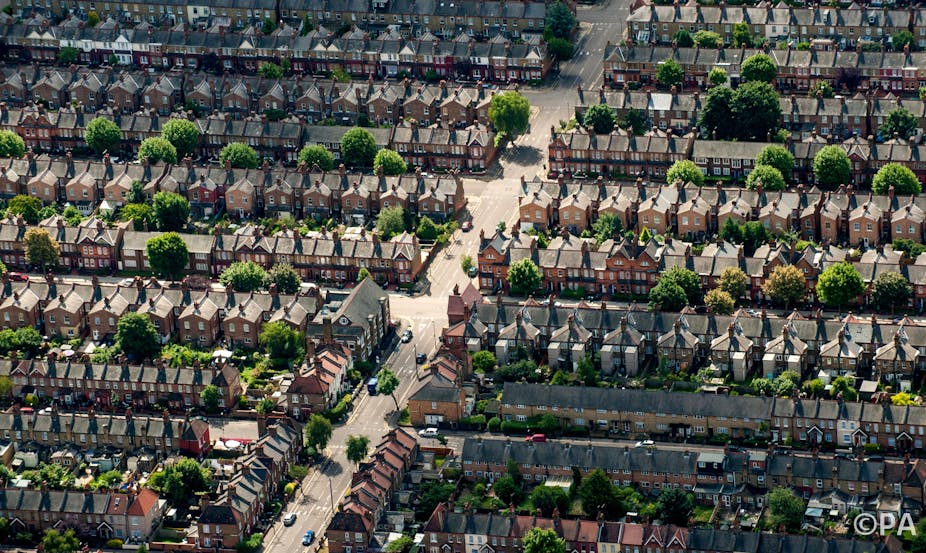The UK is one of only a handful of countries that has put in place legally binding targets to reduce greenhouse gas emissions by 80% by 2050, relative to 1990 levels. How the country intends to go about meeting these targets is another matter entirely.
Until now, the government has seen improving the energy efficiency of millions of British homes as low hanging fruit that can provide easy emissions reductions. And housing is certainly a major contributor, generating 27% of the country’s total emissions.
Improving insulation, making homes airtight, and introducing smart energy meters are all part of the government’s plan. Huge sums of money are currently being invested on refurbishing properties, which while preferable to wholesale demolition, needs to be guided by well-rounded policies. The latest approach for funding these changes is through the Green Deal, a loan attached to a house paid back through its energy bills.
Unfortunately, a policy focused solely on the reduction of CO2 emissions takes little account of the wider effects that will inevitably have: on the buildings, their inhabitants, and even on the environment. Such tightly focused policies may fail to achieve what they set out to, and may even make things worse.
A trade off required
Published as part of the Housing, Energy and Wellbeing project at UCL, our study examined the scope of these knock-on effects, and revealed more than 100 likely unintended consequences. These can be positive or negative, and are often closely linked. By trying to deal with these individually, efforts to solve a negative consequence can counteract a positive one, or reinforce another, or lead to further complications.
For example, reducing draughts in houses can make them warmer and more energy efficient, but may also increase the risk of infection from airborne pathogens, or exposure to indoor pollution. One example of such indoor pollution is the potential for a build up in concentration of radon.
Radon is an inert, radioactive gas that enters the home by seepage from the ground. Especially in areas where the geology makes it naturally prevalent, radon levels in buildings are largely determined by ventilation. It has been identified as an important risk factor for lung cancer, second only to smoking, with around 1,400 cases a year in the UK. Recent research published in the British Medical Journal has shown that when dwellings are made more air-tight, without providing alternative ventilation, indoor radon levels increase.
The obvious solution is to allow greater ventilation to help reduce indoor health risks, but this would increase the energy required to heat the home, and therefore the amount of CO2 emissions produced. Some sort of trade-off between health and the emissions policy needs to be considered.
Sound of silence
On the other hand, making houses more airtight, using double glazing for example, make them quieter places to sleep and study. This can benefit their occupants’ physical and mental health, as well as make them more productive at work and school. While quietness is a good thing, the absence of sound can lead to a sense of isolation and social disconnection for some. The simplest solution? Open your window – but then up go the CO2 emissions.
The way houses are built and arranged in neighbourhoods also influences residents’ well-being in deep and complex ways at individual, family and community levels. Intervening in this complex system can have a wide range of impacts spanning physical and mental health, culture, social cohesion, fairness, financial stability and environmental sustainability.
Better planning required
From the simple examples shown, it can be seen that the links between housing, energy use and human well-being are connected in very complex relationships. This makes policy decisions difficult, and demands a more integrative approach.
The project gives decision-makers the opportunity to understand the system they are working in, and to try to balance out different and sometimes contradictory objectives.
Taking a broad and long view is essential if we are not to embark on a course that will bring considerable unintended consequences for society. Our research that scopes out the range of consequences and the links between them is the first step.

